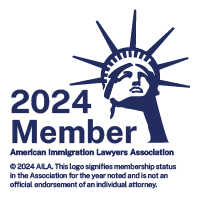On January 19, 2012, unable to wait for action by congress any longer, president Obama took unilateral action and signed an executive order designed to facilitate travel to the U.S. by simplifying the visa application process and decreasing the required paperwork. That is welcome news for millions of prospective visitors to the U.S. worldwide. For years now we’ve been complaining about the urgent need for long overdue comprehensive immigration reform, which, as most will agree, is undisputed way through which the U.S. could energize its economic recovery. It is unfortunate that, up to this day, a bitterly divided Congress was either unable or unwilling to act. Under those circumstances President Obama had no other option but to take some action on his own on the matter.
The executive order signed by the President will reduce the visa approval waiting time for Chinese and Brazilian applicants, take appropriate steps to eliminate the visa requirement for citizens of Taiwan, as well as firmly cement the Global Entry program, which literally rushes “trusted” (pre-screened) travellers’ customs clearance upon arrival in the U.S., as a permanent program which is here to stay. Markedly simplifying the visa requirements for citizens of China and Brazil had been one of the key demands of U.S. Travel Association’s visa reform campaign. Thus this measure should be considered as a victory for the trade association, which serves as the spokesperson for a large number of businesses for which tourism is their main source of revenues. The association published a highly enthusiastic press release on its website complimenting the White House action. “The steps the President took today are significant and will boost travel to the United States” declared Roger Dow, the association’s president. “His timing could not be better”, he added.
There remains, however, still a lot more action that could be taken on visa reform, but some of it can only be undertaken by Congress. Obviously, one key measure that needs to be taken in that regard is the hiring of additional personnel to issue visas. The administration has requested an increase in capacity on that area. Realistically, however, this will necessitate additional funding or allocating funds from other programs. In the current political climate it is highly unlikely that Congress will move to allocate even the smallest amount of funding on such a program during a highly contested election year. The President also wants to see 80% of non-immigrant visa applicants being interviewed “within 3 weeks of application”. That’s a noble objective, but I wouldn’t be shocked to see the Departments of State and Homeland Security fall behind. The office of the presidency wields enormous power, but even the President is unable to repair our archaic, inefficient visa system on an executive order. This requires fresh funding – and additional funding for visa processing and visitor screening is simply not on the list of priorities at the moment.
More recently, within the same spirit of visa reform agenda, the U.S. Embassy in Russia revealed in its August 29, 2012 press release the implementation of the historic U.S.-Russia visa agreement, which went into effect on September 9, 2012. That agreement will ease travel and cement stronger relations between Russia and the U.S., given that it favors the largest group of travelers from both countries: business travelers and tourists. Starting September 9, American travelers for business or pleasure are eligible to obtain multiple-entry visas valid for 3 years. The agreement also lists other facilitations in the bilateral visa system and alleviates visa waiting time for travelers from both nations. Also, the U.S. has lowered the B1/B2 visitor visa application fees for Russians, from $100 to $20. As a rule, successful Russian visa applicants will be issued a visa for the full 3-year validity period. The $160 visa application fee and validity dates for students, workers, journalists; etc. have not changed.
Thanks to this bilateral agreement between the two countries, U.S. citizens visiting Russia and Russian citizens visiting the U.S. will all be issued 3-year visas. Formal invitations are no longer required from applicants of either country, even though applicants of Russian tourist visas are still required to keep lodging reservations arrangements with a tour operator. Both countries have also agreed to issue visas in under 15 days, even though some cases may require additional time.
For Americans in Russia, the agreement did away with the previous restriction limiting stays in Russia to 90 days within any given 180-day period – same as Russian visitors: those are now permitted to remain for up to 6 months at a time. What’s more, “exit visas” for U.S. citizens who lose their passports while in Russia are no longer required.
All of the above developments in the visa issuance field are small, but nevertheless highly encouraging developments in the right direction. The U.S. visa application process, however, continues to be one of the most laborious and complicated tasks ever to be undertaken by a foreign national intending to come to the U.S. for business, pleasure or study. We at Behar International Counsel are ready to assist you and place our nearly 20 years of experience in this field at your full disposal.
Additional Resources:
For U.S. citizens with Russian travel plans
Russian citizens info on applying for US Visa
